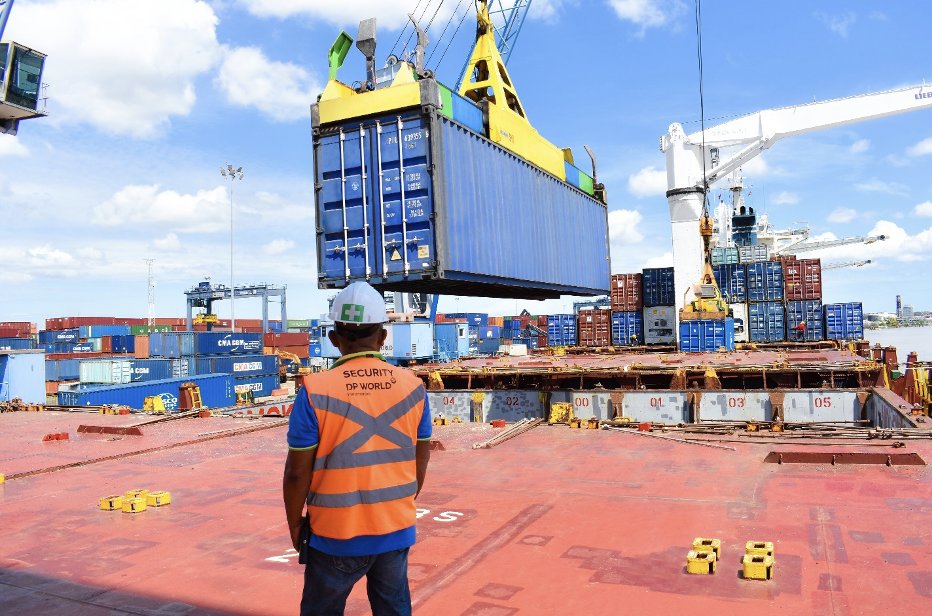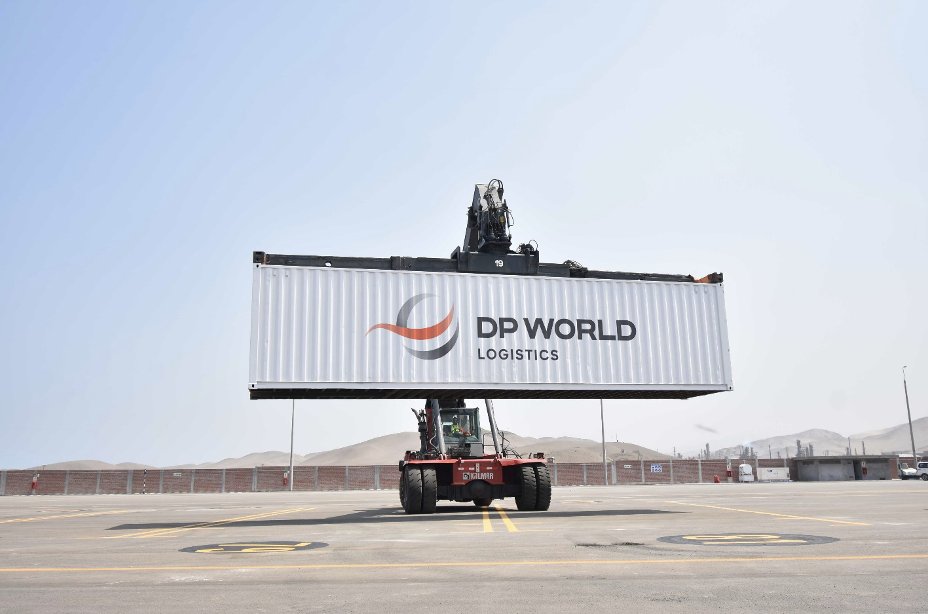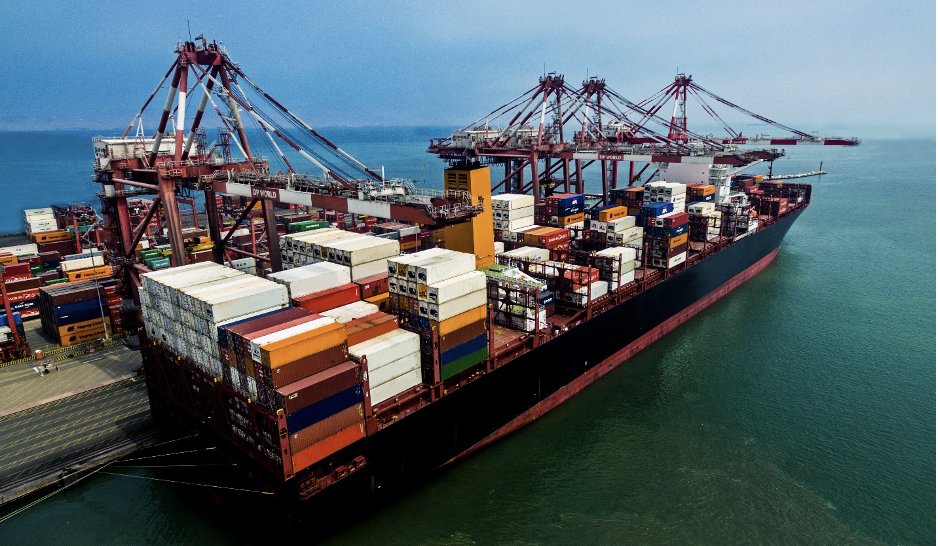Understanding shipping container costs is crucial for businesses and freight forwarders to optimise their logistics operations. This post will delve into the various aspects that influence these costs and explore ways to manage them effectively.
Starting with the different kinds of shipping containers that are accessible, such as typical dry compartments, refrigerated compartments, open top holders and flat rack holders.
This knowledge is essential in selecting the most suitable container type for your specific cargo needs.
We will discuss several factors affecting shipping container costs today, including size and type of container, distance and route of shipment, as well as availability of the desired container.
We will also break down cost components such as freight charges, port charges, and insurance costs to provide a comprehensive understanding of how each element contributes to overall expenses.
Lastly but importantly, we will offer practical strategies on reducing shipping container costs through consolidation of shipments using intermodal transport options or negotiating with carriers, as well as highlighting the importance of choosing an experienced freight forwarder who understands your unique requirements.
Table of Contents:
• Types of Shipping Containers
a. Standard Dry Containers
b. Refrigerated Containers
c. Open Top Containers
d. Flat Rack Containers
• Factors Affecting Shipping Container Costs
a. Size and Type of Container
b. Distance and Route of Shipment
c. Availability of the Container
• Cost Components of a Shipping Container
a. Freight Charges
b. Port Charges
c. Insurance Costs
• Ways to Reduce Shipping Container Costs
a. Consolidation of Shipments
b. Use of Intermodal Transport
c. Negotiating with Carriers
• Frequently Asked Questions Shipping Container Costs
o Are container shipping prices coming down?
o Why are shipping containers costing so much?
o Is the cost of shipping containers rising?
o Will shipping prices go down in 2023?
• Final Thoughts
1. Types of Shipping Containers
Shipping containers are essential for transporting goods across the globe, and understanding the different types available can help you make informed decisions when it comes to shipping your products. In this section, we will briefly explain the four common types of shipping containers: standard dry containers, refrigerated containers, open top containers, and flat rack containers.
For container dimensions and visuals, as well as more details and examples see our helpful ‘Quick Guide’.
a. Standard Dry Containers
Standard dry containers are the most commonly used type of container in global trade. They come in various sizes but typically measure 20 or 40 feet long by 8 feet wide and tall. These versatile units can accommodate a wide range of cargo such as electronics, clothing, furniture and more. Their sturdy build renders them suitable for both near and far-off transportations.
b. Refrigerated Containers
Refrigerated containers, also known as reefer units or temperature-controlled boxes, are designed to maintain specific temperatures during transit to ensure perishable items like fruits, vegetables or pharmaceuticals remain fresh throughout their journey from origin to destination.
c. Open Top Containers
Ideal for oversized cargo that cannot fit into a standard container due to height restrictions; open top shipping containers are equipped with removable roof tarps allowing easy loading via crane operations from above instead through doors at either end which may be obstructed by large objects within unit itself (such machinery).
d. Flat Rack Containers
• Cargo Type: Oversized loads requiring side-loading capabilities;
Overall, there are a variety of types of shipping containers available to meet the needs of freight forwarders and BCOs.
The cost associated with these different container types is largely determined by several factors such as size, type, distance travelled, route taken and availability.

2. Factors Affecting Shipping Container Costs
Several elements come into play when determining the cost of shipping a container, including its size and type, distance and route of shipment, and availability. In this section, we will delve deeper into these factors to help you make informed decisions regarding your freight transportation needs.
a. Size and Type of Container
The size and type of shipping container can significantly influence the overall cost. Larger containers typically incur higher fees due to increased space requirements on ships or trucks, while specialized containers like refrigerated or open-top units may command premium rates because they cater to specific cargo types.
• Dry Containers: These are standard-sized containers (20ft or 40ft) used for general-purpose cargo.
• Refrigerated Containers: Also known as reefer containers, these maintain temperature-controlled environments suitable for perishable goods such as food products or pharmaceuticals.
• Open Top Containers: Designed without a roof structure allowing easy loading/unloading of oversized items like machinery parts through overhead cranes.
• Flat Rack Containers: A versatile option with collapsible sides ideal for transporting large equipment or vehicles requiring extra width during transit.
b. Distance and Route of Shipment
The farther the point of origin is from the destination, the more expensive it is likely to be for shipping as a result of fuel costs, labour fees, tolls, and other expenditures.
Additionally, certain shipping routes may be more expensive than others due to factors such as port congestion or geopolitical issues.
c. Availability of the Container
Shipping container costs can also fluctuate based on their availability in a particular region.
For instance, if there is a high demand for containers but limited supply at your origin point, you might have to pay a premium to secure one for your shipment. Conversely, if there's an excess of empty containers available in the area, carriers may offer discounted rates to fill them up quickly.
To stay updated on container availability trends and market conditions that could affect pricing, consider subscribing to industry news sources like Journal of Commerce (JOC) or following reputable logistics blogs.
It is important to understand the factors that affect shipping container costs in order to make informed decisions when it comes to freight forwarding.
Below we will break down the various factors that influence the cost of a shipping container and how they impact total expenditure.
SeaRates Insight:
Understanding shipping container costs is essential for businesses to optimise their logistics expenses. Factors such as the size and type of container, distance and route of shipment, and availability can significantly impact overall costs.
Keeping up with industry news sources like JOC or reputable logistics blogs, like our SeaRates blog can help stay updated on market conditions that could affect pricing.

3. Cost Components of a Shipping Container
Comprehending the multiple elements that contribute to the expense of shipping a container when transporting items internationally is essential.
These costs can be broken down into three main categories:
• Freight charges
• Port charges
• Insurance costs
By gaining an understanding of these expenses, you will be better equipped to manage your overall shipping budget and identify potential areas for savings.
a. Freight Charges
Freight charges are fees paid to carriers for transporting your goods from one location to another.
The amount of the fees paid to carriers for transporting goods will be determined by multiple elements, including container size and type, route taken, distance travelled and any additional services required (e.g., refrigeration).
To get accurate quotes on freight rates from different carriers or forwarders in advance can help you plan your shipment effectively.
i. Ocean Freight Rates
• Full Container Load (FCL): FCL refers to shipments where one shipper occupies an entire container with their cargo only; this option usually offers lower per-unit pricing compared with LCL due its higher volume capacity.
• Less than Container Load (LCL): LCL shipments consist of multiple shippers sharing space within a single container; this option is more suitable for smaller volumes but may have higher per-unit costs compared with FCL shipments.
ii. Fuel Surcharges & Bunker Adjustment Factor (BAF)
The fluctuating price of fuel affects ocean freight rates through surcharges like BAF (Bunker Adjustment Factor). Carriers adjust BAF periodically to account for changes in fuel prices, which can significantly impact the overall cost of shipping a container.
b. Port Charges
Port charges are fees associated with the handling and processing of containers at both origin and destination ports. These charges may include:
• Terminal Handling Charge (THC): A fee charged by terminal operators for services such as loading, unloading, and storing containers within port facilities.
• Documentation Fee: This charge covers the costs incurred by carriers or forwarders when preparing shipping documents like Bills of Lading or Cargo Manifests.
• Customs Clearance Fees: Fees paid to customs brokers for facilitating import/export procedures on behalf of shippers; these fees vary depending on factors like shipment value and complexity of regulations involved.
c. Insurance Costs
To protect your goods during transit, it is crucial to have adequate insurance coverage in place. Shipping insurance typically falls into two categories:
i. All-Risk Coverage
All-risk coverage provides protection against most types of damage or loss that could occur during transportation - including theft, fire, water damage, etc., subject to certain exclusions specified in the policy terms & conditions (source). This type of coverage offers more comprehensive protection compared with other options but may come at a higher premium cost.
ii. Total Loss Only (TLO) Coverage
TLO coverage only compensates for the total loss of goods, meaning that partial damage or losses are not covered. This type of insurance is generally more affordable than all-risk coverage but offers a lower level of protection.
Understanding these cost components will help you make informed decisions when planning your shipments and selecting carriers or freight forwarders to work with. Being aware of these costs will also help you identify potential areas for savings and optimise your shipping budget effectively.
SeaRates Insight:
Understanding the cost components of shipping containers is essential for managing your overall shipping budget and identifying potential areas for savings.
These costs include freight charges, port charges, and insurance costs, which can be affected by factors such as container size and type, distance travelled, route taken by the carrier, fuel surcharges like BAF (Bunker Adjustment Factor), terminal handling charge (THC), documentation fee, customs clearance fees and two types of shipping insurance: all-risk coverage or total loss only (TLO) coverage.

4. Ways to Reduce Shipping Container Costs
Reducing shipping container costs is crucial for businesses looking to optimise their supply chain and minimise expenses.
By exploring various strategies, such as consolidating shipments, using intermodal transport, and negotiating with carriers, companies can significantly lower their freight rates while maintaining efficient shipping services.
a. Consolidation of Shipments
By combining multiple smaller shipments into one large shipment, businesses can benefit from the cost savings associated with transporting goods in bulk on container ships.
This strategy allows businesses to take advantage of the economies of scale that come with transporting goods in bulk on container ships. In turn, this can lead to lower per-unit transportation costs and potentially higher profit margins.
• LCL (Less than Container Load): For small shipments that do not fill an entire container, combining them with other consignments in a shared container reduces overall cost.
• FCL (Full Container Load): If your business has enough volume or frequency of shipments from one origin point to another destination point; it may be more economical to book an entire container rather than paying for individual LCLs.
b. Use of Intermodal Transport
Incorporating different modes of transportation within a single journey can also help reduce shipping container costs.
Known as intermodal transport, this approach combines the strengths of each mode - such as railroads' fuel efficiency or ocean carriers' capacity - resulting in cost savings without sacrificing service quality or delivery times.
Intermodal transportation can also reduce the need for additional warehousing and storage, further lowering costs.
c. Negotiating with Carriers
Negotiation plays a significant role in obtaining competitive freight rates from carriers. By understanding market conditions and leveraging their shipping volume, businesses can negotiate better deals with ocean carriers. Factors to consider when negotiating include:
• Shipping Volume: Higher volumes often lead to lower per-unit costs due to economies of scale.
• Flexibility: Being flexible with shipment dates or routes may allow you to take advantage of carrier's available capacity at lower rates.
• Benchmarking Rates: Regularly monitoring market trends and comparing your current freight rates against industry benchmarks will help identify opportunities for negotiation.
In addition to these strategies, working closely with an experienced freight forwarder who understands your business needs is essential in optimising shipping container costs while maintaining efficient operations.
A dependable partner will provide valuable insights into market trends, offer tailored solutions based on specific requirements, and support negotiations with ocean carriers for more favourable terms.
SeaRates Insights:
Businesses can reduce shipping container costs by consolidating shipments, using intermodal transport, and negotiating with carriers.
Consolidation of smaller shipments into a single larger shipment allows for economies of scale while intermodal transport combines different modes to lower costs without sacrificing quality or delivery times.
Negotiation based on factors such as shipping volume and flexibility is also important in obtaining competitive freight rates from carriers.
Remember - you don’t have to spend your valuable time on this.
SeaRates is the largest tariff search engine in the world for international shipping.
We compare all available cargo delivery options at your request and arrange their transportation and insurance. We provide transparency and control, the cheapest price and the fastest transit time. Combine everything in one place.
Frequently Asked Questions Shipping Container Costs
Are container shipping prices coming down?
No, container shipping prices are not expected to come down significantly in the near future.
The ongoing global supply chain disruptions and high demand for containers have kept the costs elevated. However, fluctuations may occur due to market dynamics and regional factors. Experts predict a gradual stabilization of rates over time.
Why are shipping containers costing so much?
The high cost of shipping containers can be attributed to several factors such as increased demand for goods, port congestion, limited availability of empty containers, and COVID-19 related disruptions affecting labour and logistics operations. These challenges have led to an imbalance in the global supply chain causing higher container costs.
Is the cost of shipping containers rising?
Recently yes, the cost of shipping containers has been on an upward trend in recent years due to unprecedented demand for goods amid pandemic-related disruptions. Factors like port congestion, equipment shortages, and imbalanced trade flows contribute to this rise in costs.
However, some analysts believe that these increases will eventually stabilise as markets adjust.
Will shipping prices go down in 2023?
Predicting exact trends is difficult; however, experts suggest a potential stabilisation in 2023. This is contingent on factors like the resolution of supply chain disruptions, increased container availability, and improved global trade balance. However, unforeseen events or continued challenges could prolong elevated shipping prices.
Final thoughts
Understanding shipping container costs is an important part of freight forwarding and BCO operations.
Shipping containers come in various types with different cost components that can be affected by a variety of factors. By gaining insight into these elements, you can lessen your container shipping expenses and amplify productivity for your organisation.
Take the guesswork out of shipping containers by learning more about their costs and how to get the best deal. Remember for the best freight rates and much more visit SeaRates.
Invest in your business's success today with our comprehensive guide on freight container costs.

